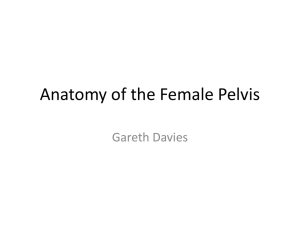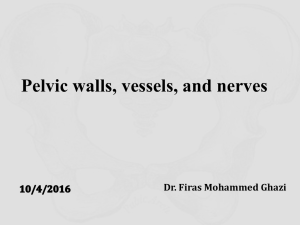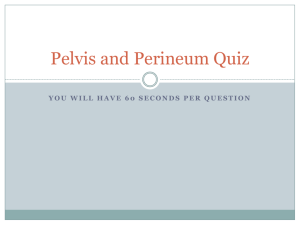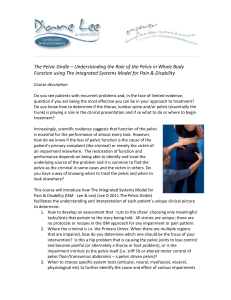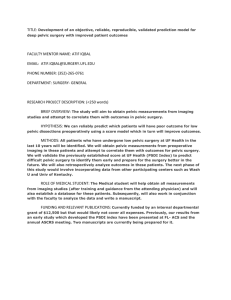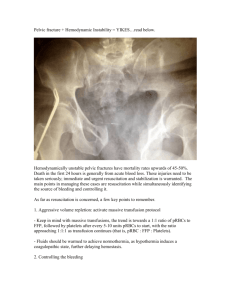1 - Unit 7 Pelvis and Perineum Objectives
advertisement
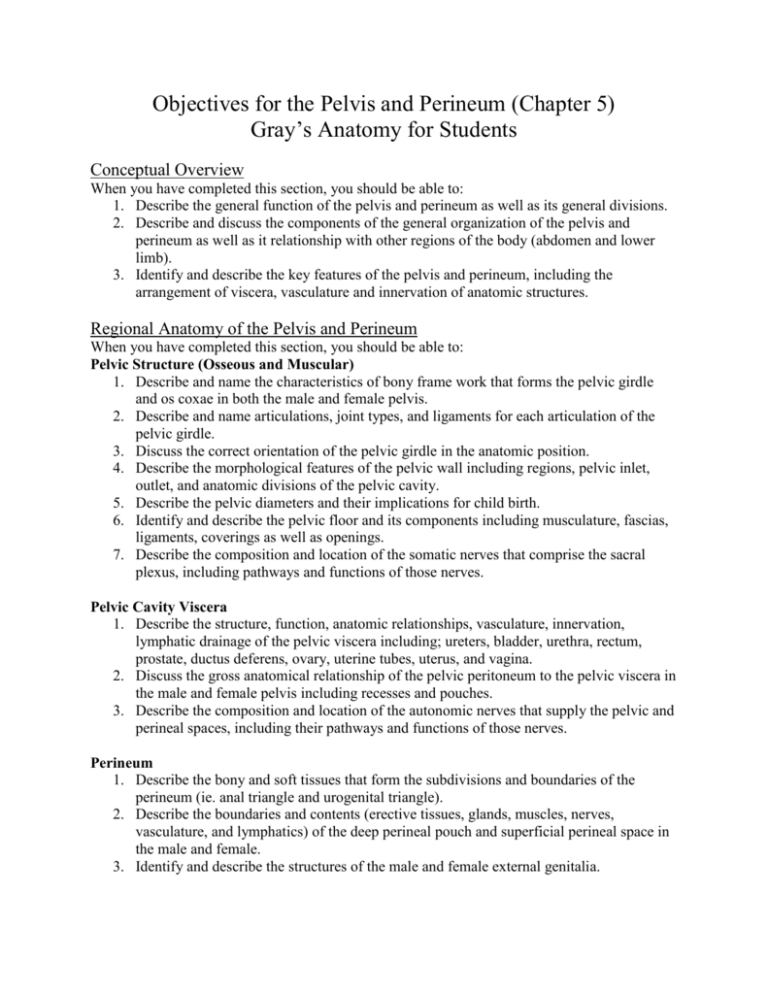
Objectives for the Pelvis and Perineum (Chapter 5) Gray’s Anatomy for Students Conceptual Overview When you have completed this section, you should be able to: 1. Describe the general function of the pelvis and perineum as well as its general divisions. 2. Describe and discuss the components of the general organization of the pelvis and perineum as well as it relationship with other regions of the body (abdomen and lower limb). 3. Identify and describe the key features of the pelvis and perineum, including the arrangement of viscera, vasculature and innervation of anatomic structures. Regional Anatomy of the Pelvis and Perineum When you have completed this section, you should be able to: Pelvic Structure (Osseous and Muscular) 1. Describe and name the characteristics of bony frame work that forms the pelvic girdle and os coxae in both the male and female pelvis. 2. Describe and name articulations, joint types, and ligaments for each articulation of the pelvic girdle. 3. Discuss the correct orientation of the pelvic girdle in the anatomic position. 4. Describe the morphological features of the pelvic wall including regions, pelvic inlet, outlet, and anatomic divisions of the pelvic cavity. 5. Describe the pelvic diameters and their implications for child birth. 6. Identify and describe the pelvic floor and its components including musculature, fascias, ligaments, coverings as well as openings. 7. Describe the composition and location of the somatic nerves that comprise the sacral plexus, including pathways and functions of those nerves. Pelvic Cavity Viscera 1. Describe the structure, function, anatomic relationships, vasculature, innervation, lymphatic drainage of the pelvic viscera including; ureters, bladder, urethra, rectum, prostate, ductus deferens, ovary, uterine tubes, uterus, and vagina. 2. Discuss the gross anatomical relationship of the pelvic peritoneum to the pelvic viscera in the male and female pelvis including recesses and pouches. 3. Describe the composition and location of the autonomic nerves that supply the pelvic and perineal spaces, including their pathways and functions of those nerves. Perineum 1. Describe the bony and soft tissues that form the subdivisions and boundaries of the perineum (ie. anal triangle and urogenital triangle). 2. Describe the boundaries and contents (erective tissues, glands, muscles, nerves, vasculature, and lymphatics) of the deep perineal pouch and superficial perineal space in the male and female. 3. Identify and describe the structures of the male and female external genitalia. Clinical and Surface Anatomy When you have completed this section, you should be able to: 1. Identify the superficial landmarks associated with the pelvis and perineum [features of the skin, fascia, spaces, compartments, boney landmarks, muscles, ligaments, nerves, vasculature and joints]. 2. Apply anatomic knowledge and understanding to clinical scenarios presented in the chapter (see green boxes).



